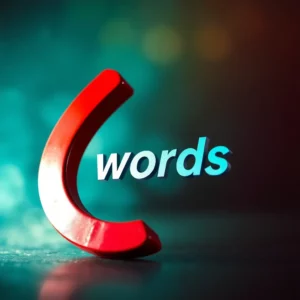Unlocking the Art and Science of Behavioral Psychology in Copywriting: How to Turn Words into Conversion Magnets in 2026, This is playing the new way for SEO

Post by Peter hanley Bizbitspro.com
Understanding the Hidden Power of Psychology in Copywriting
Anyone can write, but few can persuade. The true masters of copywriting don’t just string words together—they spark action, shape perception, and guide behavior. In 2025, where AI-generated content floods every screen and audiences crave authentic connection, the ability to influence through psychological insight is the single most valuable skill for marketers, entrepreneurs, and creators. At the crossroads of language and human motivation, behavioral psychology isn’t just a tool for copywriters—it’s the engine that powers every piece of content from first glance to final click.
So, let’s journey beyond clever wordplay. Let’s unlock the psychological strategies that transform casual scrollers into lifelong customers. By blending cognitive science, emotional resonance, and data-driven creativity, today’s copywriters engineer content ecosystems that dominate search engines and resonate deeply with human hearts.
Why Psychology Is the Copywriter’s Secret Weapon
Most people don’t buy because of logic—they buy because something feels right. Whether we’re reading an ad for a kitchen gadget or scanning a landing page for coaching services, we want assurance that what we’re about to invest in will solve our problem and make us feel good. This is where behavioral psychology steps in.
Rather than focusing on features, elite copywriters speak directly to readers’ fears, dreams, and desires. They answer the unspoken questions: “Is this for me?” and “Can I trust this?” By using deep behavioral triggers, writers guide users toward a “Yes”—the golden moment when curiosity becomes action.
The Psychological Principles that Move Markets
Reciprocity: Give Before You Receive
Reciprocity is one of the oldest rules in human relationships: give something valuable, and your audience will feel compelled to give back—be it their attention, trust, or a purchase. Free content, helpful tips, or quick wins can trigger positive feelings and loyalty. Whenever you offer value upfront, you prime your audience for engagement.
Social Proof: Building Trust through Belonging
People trust what others trust. Sharing testimonials, case studies, or statistics like “10,000+ happy customers” adds credibility and reassures readers that they’re making the right choice. Authority—citing experts and being associated with well-known brands—compounds this effect, amplifying confidence.
Scarcity and Urgency: The Fear of Missing Out
Humans naturally avoid loss. “Only 3 left” or “Offer ends soon” triggers an immediate emotional response. Scarcity creates a sense of urgency and moves people toward action—for fear they might miss out on something great.
Consistency: Reaffirming Prior Choices
If someone has started down a path—clicked a link, joined a list, read a blog—they’re more likely to continue if the messaging reinforces their previous choices. Copy that aligns with their journey builds psychological momentum and lowers resistance to the next step.
Curiosity: Opening Loops for Dwell Time
Humans are wired to seek resolution. Open “loops”—mysteries, stories, or teasers—keep readers moving down the page, eager to find closure. A headline like “The one mistake ruining your conversion rates…” harnesses curiosity and drives engagement. In longer blogs, return to open-loops in each section for higher retention.
Loss Aversion: Highlighting Stakes without Negativity
People are twice as motivated to avoid loss as they are to achieve gains. Reframing benefits in terms of loss prevention (“Stop wasting money…” instead of “Make more money”) taps into this primal bias and makes calls-to-action more compelling.
Emotional Decision-Making: The Neuroscience of Copywriting
As Harvard neuroscientists confirm, 95% of purchase decisions originate in emotional parts of the brain, not rational logic. Effective copywriting activates three neural subsystems:
- Primal Brain: Responds to survival triggers (scarcity, safety guarantees)
- Emotional Brain: Caught by storytelling and aspirational language
- Rational Brain: Validated by data tables and value comparison
Action-oriented verbs like “Discover,” “Transform,” and “Unlock” scientifically boost prefrontal cortex activation, driving engagement and action.
The Power of Framing and Metaphor
How you frame an offer shapes its perceived value. “Save $500/year” outperforms “Avoid losing $500” by 63%—proving the immense impact of strategic phrasing. Metaphors and analogies add conceptual clarity, making abstract benefits concrete and memorable.
How to Apply Behavioral Psychology Across Your Content Funnel
Email: Curiosity, Reciprocity, and Urgency
Engage readers with cliffhanger subject lines, exclusive freebies, and time-sensitive offers. For example: “Unlock your bonus before midnight.” Mix in storytelling for relatability and higher open rates.
Social Media: Humor, Belonging, and Scarcity
Posts should amplify community (“You belong here”), pepper in humor, and tap into urgent trends (“Don’t miss today’s breakthrough tip!”). Use testimonials and user-generated content for social proof.
Landing Pages & Product Pages: Authority, Loss Aversion, Clarity
Give expert endorsements, show risk-reversal (“Try it free for 30 days”), and keep messaging crystal clear. Prioritize testimonials, stats, and pain-point-driven headlines for authority.
Ads: Visual FOMO and Emotional Hot Buttons
Ads must grab attention fast—use bold visuals, emotional triggers, and direct CTAs (“Don’t let this offer slip!”). Test various angles using behavioral triggers to maximize click-through rates.
Copywriting in Action: Real-World Case Studies
Amerisleep reframed traditional product features as transformations (“Better sleep means better health”), leading to a 13.9% order increase.
TruckersReport boosted conversions by 79.3% with imperative calls-to-action (“Join now, get results today!”).
IBM saw a 22% jump in B2B proposal acceptance after switching to cognitive linguistics and framing offers to fit conceptual metaphors (“Firewall protection”).
Priming, Open Loops, and Fluency: Advanced Behavioral Tactics
Priming Effect: Use brand words and imagery that set the emotional tone (“Resilient,” “Transform,” “Abundance”). This builds subconscious associations before readers even comprehend your pitch.
Open Loop Effect: Tease outcomes in advance—“Find out the secret below…”—and revisit unresolved loops to encourage scrolling.
Cognitive Fluency: Write in short sentences with direct language. Readers trust and recall easy-to-process information.
Ethical Influence: Guiding, Not Manipulating
Powerful psychological copywriting isn’t about tricking people—it’s about helping them make satisfying choices. Use techniques responsibly, ensuring that persuasion serves genuine value rather than exploitation.
If your offering improves lives, your behavioral tactics become acts of service—not just sales strategy.
Engineering for SEO: Semantic Signals and Algorithmic Authority
In 2025, every high-performing blog is built on semantic SEO and behavioral signals. Copy must satisfy Google’s algorithms (RankBrain, BERT) by:
- Mapping entity clusters relevant to the main keyword
- Structuring with clear H2/H3s for topical depth
- Embedding related contextual keywords and FAQ loops
- Linking internally to build a topical authority graph
Featured snippets, People Also Ask answers, and AI-generated summaries reward cohesive, psychologically magnetic content over shallow keyword stuffing.
Example Content Structure for Maximum SEO Power
Title: The Hidden Influence: Unleashing Behavioral Psychology in Copywriting That Converts
- H2: Why Behavioral Psychology Is a Game Changer
- H3: RankBrain and Behavioral Signals
- H3: Emotional and Entity Mapping
- H2: Unlocking Emotional Triggers (Curiosity, Scarcity, Belonging, Mastery)
- H3: Copy Examples in Email, Social, Landing Pages
- H2: Neural Linguistics: From Framing to CTA Optimization
- H3: Metaphor, Open Loop, Cognitive Fluency
- H2: Case Studies: Brands Using Behavioral Science for Growth
- H2: Ethical Influence and Long-Term Trust
- H2: FAQ: Behavioral Copywriting for SEO Success
- H3: Top Questions and Quick-Inline Answers
The Next Level: Creating Your Algorithmic Authority Map
Develop interconnected pillar articles around your core topic (“behavioral psychology in copywriting”) and support them with targeted long-form posts on adjacent high-intent keywords (“emotional triggers in copywriting,” “loss aversion persuasion tactics,” “storytelling psychology in content”). Link these nodes together to form a content ecosystem that Google’s Knowledge Graph recognizes as authoritative.
Embed deep NLP signals by naturally weaving related phrases and entities, and reinforce with FAQ sections for searcher satisfaction and snippet extraction.
Meta Title & Description Samples
- Title: How Behavioral Psychology in Copywriting Converts Readers: Emotional Triggers & SEO Authority Explained
- Description: Discover the psychological secrets behind sales-generating copywriting, from emotional triggers to advanced SEO tactics—all engineered for Google’s RankBrain, AI summaries, and real human engagement.
Your Blueprint for Persuasion that Works—Now and Next
By leveraging behavioral psychology and semantic SEO, your copy will do more than rank: it will build enduring trust, drive action, and future-proof your brand’s online authority. Use these psychological principles, test new behavioral angles, and stay ethically grounded—you’ll command the attention and loyalty of both search engines and seekers for years to come.
Words that count are the basis of the blog writer at Wealthy Affiliate which is just part of a vast program of writer support

